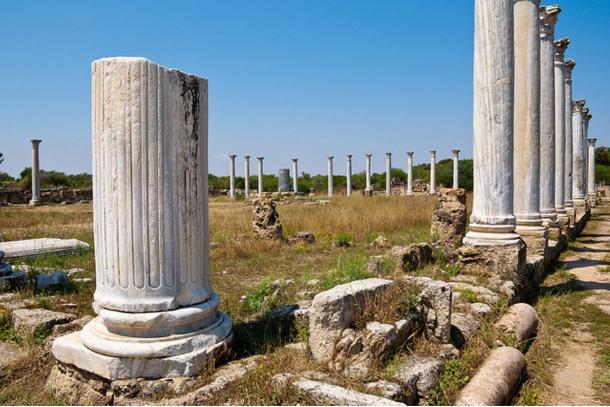
Ancient ruins of the Salamis, Cyprus Xavi via Flickr
Salamis was one of the most important cities of its time. Cyprus was a hugely successful trading island during the ancient times. This brought a vast amount of wealth to cities like Salamis.
Salamis was said to have been founded and built by the legendary archer, Teucer.
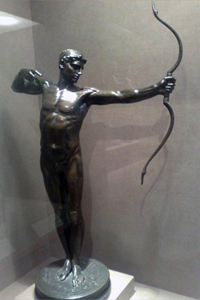
Teucer. Wikimedia Commons
In Homers legend Teucer, is the son of King Telamon and Queen Hesione. Queen Hesione was the daughter of King Laomedon of Troy. King Telamon was the ruler of Salamis, off Attica. According to Homer, Teucer fought for Greece against his cousins Hector and Paris (of Troy) in the Trojan War. Teucer was said to have been one of the soldiers that attached Troy from inside the Trojan horse and he was said to have fired his arrows at Hector but Apollo protected Hector with his shield. Hector managed to throw a large rock at Teucer injuring him.
After the war, King Telamon disowned Teucer for failing to prevent his half-brother Ajax committing suicide. The story goes that during the Trojan War, Achilles had been killed in battle. Ajax managed to retrieve his body but he was not chosen to lead the Greek army in his place. Instead the army had chosen Odysseus to lead them. Unable to bear the humiliation, Ajax planted his sword into the ground and fell upon it.
After Teucer was banished from his homeland he sailed to Cyprus where he founded his own city also called Salamis.
Salamis was thought to have been the capital of Cyprus as far back as the 11th century B.C.
Many different powerful civilizations like the Persians, Egyptians, Assyrians, and Romans have ruled Salamis throughout history.
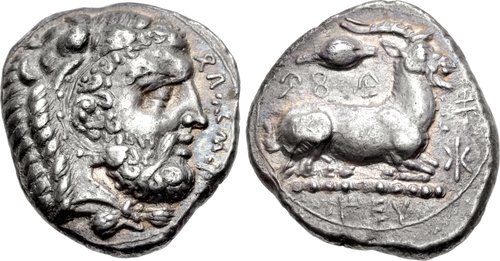
Evagoras Stater, Bearded head of Herakles right, (Euagoro in Cypriot) / Ram right; barley grain above. Courtesy of CNG coins
Although much of Salamis still remains buried the archeological research is on going and there are many places for tourists to visit. These include the amphitheater which consists of 50 rows of seating which could hold approximately 15,000 people.
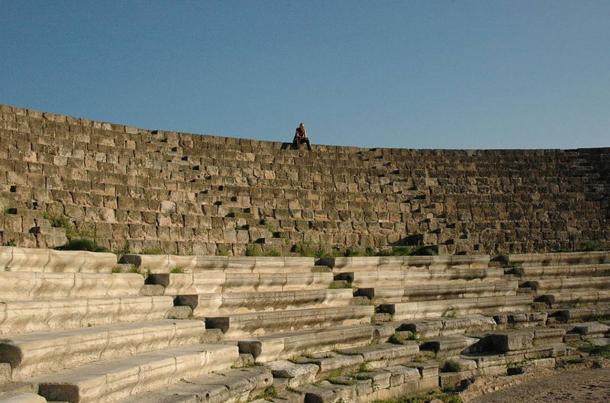
Amphitheater of Salamis, Wikimedia Commons
This city once contained a gymnasium, roman baths with both hot and cold plunge pools, public latrines, a harbour a temple to Zeus as well as many other important buildings like a Byzantine church, much of which can still be seen today. You can also view wonderful paintings and carved statues. Unfortunately many of the statues were de-faced or damaged during the Christian period of 400 A.D. along with any other pagan or Roman ideology.
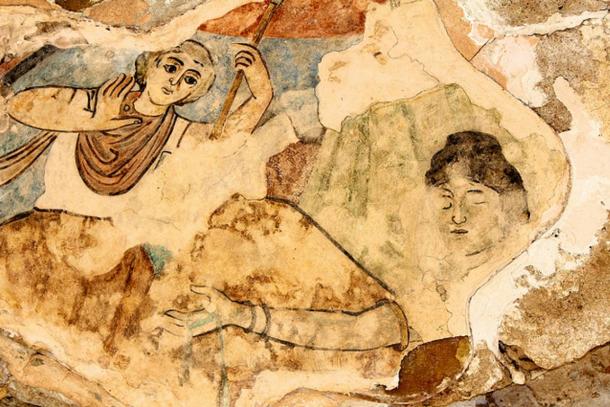
Roman painting at Salamis, Cyprus. John Higgins via Flickr
There are also many burial caves and the necropolis of Salamis can be found to the west of the town. It contains a museum which displays some of the wonderful finds made there including a “Royal” grave with a chariot buried with horses alongside rich grave goods imported from Egypt and Syria.
Salamis had been partially destroyed by earthquakes and tidal waves but its final destruction came during the Arab raids from 647 to 649 A.D. By this time most of the residence abandoned the city and moved to Famagusta.
Salamis is also an important place for religious visitors as it was the first stop on Paul’s first missionary journey. “When they arrived at Salamis, (Paul and Barnabas) proclaimed the word of God in the Jewish synagogues. John was with them as their helper” (Acts 13:5, NIV).
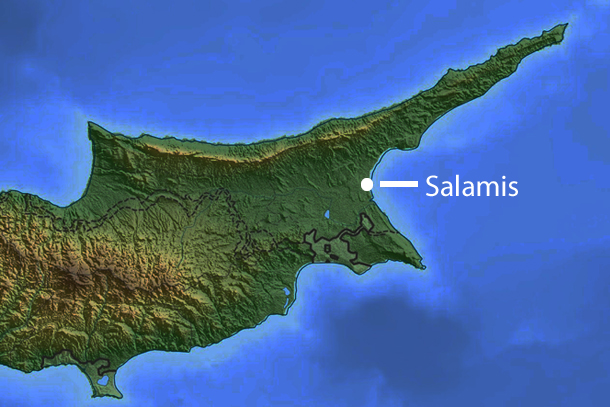
Salamis can be found on the coast by driving approximately 5 miles (9km) north of Famagusta. It is well signposted. Most visitors are happy to spend an hour or two visiting the main excavated ruins, but as it covers such a large area you could easily spend the majority of your day wondering around. Why not take a picnic to have on the beach. It is recommended that you take ample water with you as Cyprus does get quite hot during the summer months and wear a hat or take many breaks in the shade.
References
http://en.wikipedia.org/wiki/Salamis,_Cyprus
http://www.britannica.com/EBchecked/topic/518939/Salamis
http://www.salamina.gr/Default.aspx?tabid=476&language=en-US
http://www.bibleplaces.com/salamis-cyprus.htm
